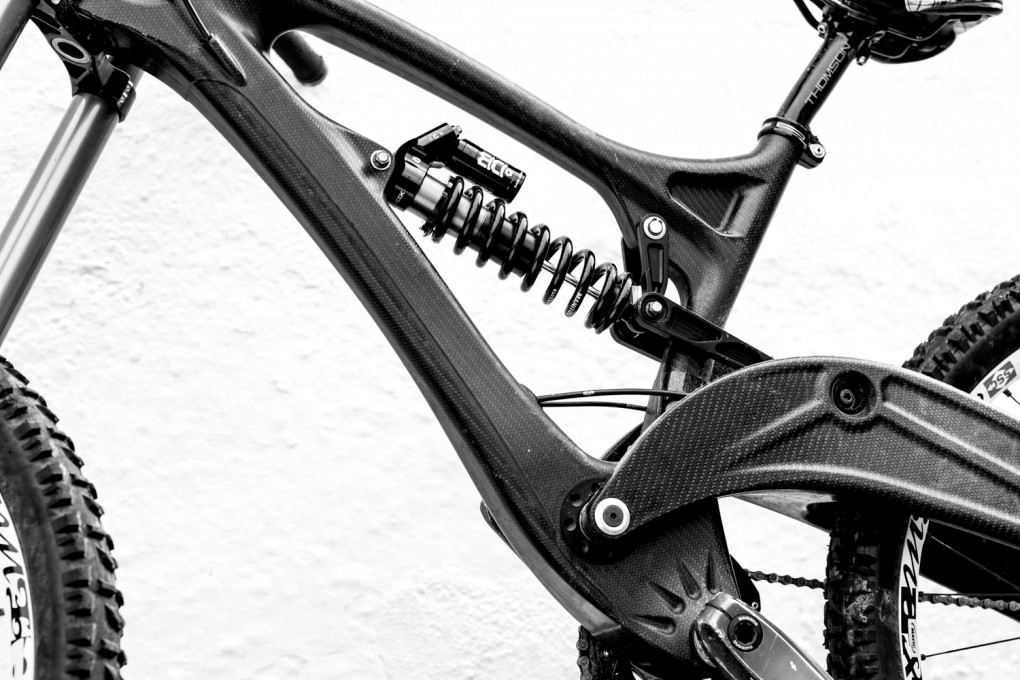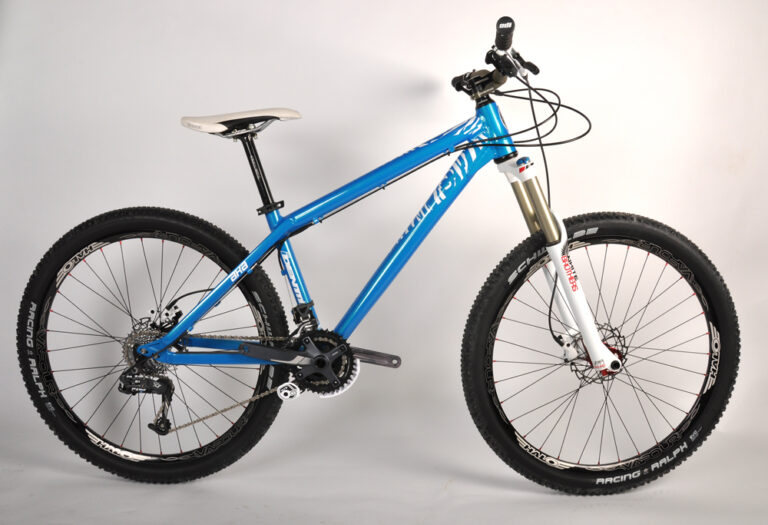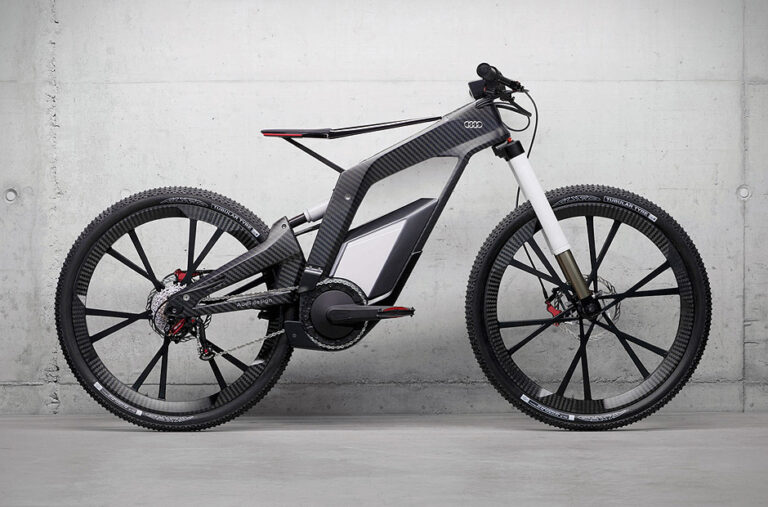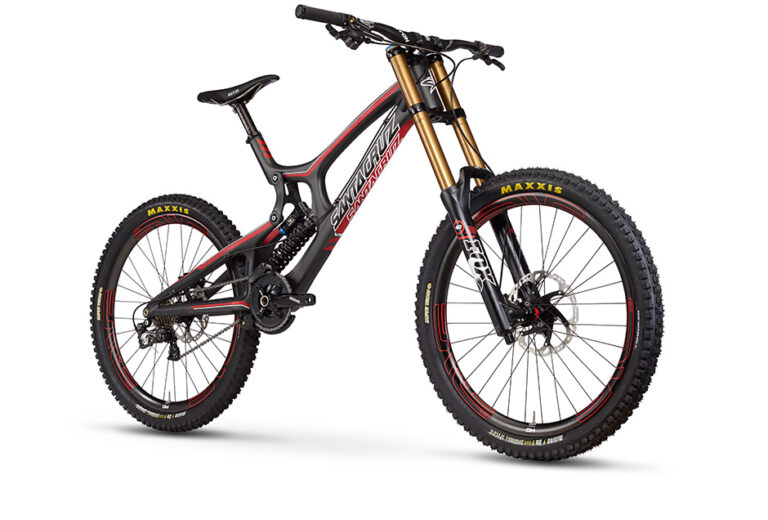
From Dirt Issue 126 – August 2012
Oxford engineers formulate a stunning speed king…Words by Steve Jones. Photos Steve Jones.
Dirt: Tim you work in motorsport industry, can you tell us a bit more detail please?Tim: For the last 8 years I have had the privilege of working in F1, initially with Force India and more recently with Lotus F1. I am a mechanical design engineer and spend the majority of my time hunched over a computer screen designing rear suspension systems. Formula 1 must nearly be unique in the engineering world for the speed at which designs are conceived, manufactured and tested. You can gain near instant satisfaction from seeing your designs perform as intended; in contrast, there is nowhere to hide when parts don’t work. Like all design the key in my job is in deciding what areas to compromise on and what areas are crucial for performance, there is very little that is superfluous on an F1 car.
 Tell us about Nick Lynch your partner in this project?
Tell us about Nick Lynch your partner in this project?
Nick is a very good friend of mine that I met at university. We bonded over a common frustration of not been able to wheelie our BMX’s whilst riding the streets of Coventry. Nick studied Manufacturing Engineering and following university he embarked on a career working with CFRP (Carbon fibre reinforced polymer). Nick’s wealth of manufacturing experience in all types of structural CFRP components mixed with his love of bikes makes him an intrinsic part of this project. He works at a brilliant composites manufacturing company in the south of England called Global Technologies Racing. Alongside giving me my first break into motor sport they have been involved in some fascinating projects including the then land speed record car Thrust SSC, Le Mans, Indycar and F1. I would also like to doff my hat to another fine friend of mine, Ron Brain. Ron’s twenty years of experience as a machinist made it easy for him to manufacture the metallic components for this bike.
‘The Mule’ then as you describe it, what was your inspiration in terms of angles?One of the founding principles for this project was to keep it simple. I wanted a lightweight, stiff, robust, affordable platform; I wanted to design a simple bike that did the basics well. I was prepared to compromise some theoretically desirable characteristic to achieve this goal, if at a later stage I felt the need to add layers of complication I could always do that, I hoped to design a solid baseline that could be developed as required. To this end a single pivot bike was always my favoured route.
A relatively long swingarm with the pivot aligned to the chainline I felt would give me acceptable pedalling characteristics and minimise chain growth. I was happy that my pivot location offers a relatively benign axle path. I wanted a low motion ratio on my shock and after a few summers of riding in Finale Ligure I was happy that 215mm was plenty of travel. The packaging requirements of a 9.5” shock and adequate seat to rear wheel clearance dictated much of the form of the frame.
With a 1.5” head tube I felt quite comfortable with a middle of the road head angle of 64deg as I could always alter it as required. With a BB height of 14.5” I knew I had a bit of scope to run the bike with more sag if required. I didn’t want to be stuck with a prototype that dragged its pedals everywhere. The relatively long wheelbase of 47” enabled me to minimise the rearward weigh distribution due to the rider’s position.
Why carbon?I have a lot of experience with designing structural components from CFRP, it’s extremely high specific strength offers you the ability to design a lighter and stronger component than is possible with a metallic material, depending on the materials used a composite structure can also be designed to be extremely tough. For small–scale manufacture or prototyping the ability to produce wildly different components, in so far as mass, stiffness and cost, from the same tooling is very interesting. Likewise with a composite material you have much more freedom on the shape and form of the part than is reasonably achievable on a metallic part.
You’ve gone for overbuild to test the function right? The final version could be significantly lighter?Without doubt this frame is significantly stronger than it needs to be to withstand realistic loads. With this particular frame we set out to prove our manufacturing concepts and to produce a solid baseline on which we could test the function of the bike. If we start with a stiff frame we will learn as much as we can about the function of the suspension independent of the compliance in the frame. We have a lot of scope to reduce the mass of this bike, I suspect even before we start to influence the suspension characteristics.
Are you happy with it in terms of angles, visual, suspension?It’s very early days in so far as evaluating the success of the geometry, personally I am happy with how it rides, there are no nasty surprises, you know where you are when you ride it. As a rider I do not have the required speed to really test the bike, the next stage in this project is generating feedback from riders that can push harder than I can. I have purposefully been conservative on the geometry; so far I am happy with the compromises I have made.
Visually I cannot fault the workmanship that has gone into this frame, considering it is a raw frame, nothing is hidden, the basic finish is beautiful, I have seen significantly worse on a race car! I think it is always going to be a challenge to design an aesthetically pleasing single pivot bicycle that is inherently stiff. Function certainly outweighed form during the design but I did agonise slightly over the appearance of the swingarm. Hopefully the finished result is easy on the eye.
A time consuming project? My expectations on lead–times took a little re–calibrating on this project, you cannot rightfully expect suppliers to drop everything to work on a tiny order of bicycle components. To manufacture one CFRP frame you need the same amount of tooling as though you are making 20. This was always intended to be a learning experience and I feel we have a much better idea of where the bottlenecks are now than we did two years ago.
My expectations on lead–times took a little re–calibrating on this project, you cannot rightfully expect suppliers to drop everything to work on a tiny order of bicycle components. To manufacture one CFRP frame you need the same amount of tooling as though you are making 20. This was always intended to be a learning experience and I feel we have a much better idea of where the bottlenecks are now than we did two years ago.
I wanted a low motion ratio to keep the loads in the shock down, hence the 9.5” shock. I didn’t want to be to bold on the shock curve, linear or rising rate was my goal. I have ended up with a curve that is linear for the first half of its travel and slightly rising rate for the second half.
You mentioned 35% rising rate, correct?Yes, for the second half of the suspension travel.
The overall design lends itself to a shorter travel too?I was tempted to build the first frame with some long travel single crown forks. I would be very interested in doing a lighter lay–up based on the same architecture. The simple linkage driven shock layout would be easy to redesign for less rear suspension travel.
Will you be taking further steps with this bike?The next step with this frame is to get some more mileage under its belt, I would like to get a competitive rider to race it, rider feedback is extremely important at this stage. In conjunction with this track testing we need to manufacture a new frame from existing tooling with a lighter lay–up, I am excited about this prospect; we should be able to get to a very competitive mass whilst maintaining the strength, durability and stiffness of the first prototype.
Does it need a name?I always felt it was a bit presumptuous giving ‘Project X’ a name, however it is now getting a bit embarrassing that we don’t have one, it will have to remain ‘The Mule’ for a while longer.
RIDEIt’s been a while since I rode such a well–proportioned bike as this one. The longish wheelbase is shared beautifully front and rearwards of the bottom bracket offering roughly 18” of chainstay and 30” front centre. A sublimely constructed, shaped and balanced front end is paired with a rear end clearly of motorcycle inspiration and reassuringly massive. Thirty–five per cent rising rate, featuring Cane Creek’s inimitable Double Barrel, the single pivot with linkage offers up serious bearing area building works. Both main shock pivot mounts have integral aluminium mounts so too the bottom bracket insert and rear axle hardware. Working on the bike, stripping it down is very simple.
Somehow Tim has managed to bring the very best out of the Cane Creek shock allowing it to do what it was designed for…grip. The back end of this bike is superlative stuff. Offering a more than healthy amount of traction the mid stroke is managed gracefully as a result of superb parity between suspension design and shock, probably as good as, if not better, than most bikes I’ve ridden. The damping is smooth throughout the range – no weak spots, steps or weirdness – all refreshingly simple and effective.
The bike is totally effortless to ride and straightforward in its ride dynamic. It tracks the ground but doesn’t get caught up in the carnage. The nature is more ‘wheels on ground’ than say the super lightness of a Santa Cruz V10 or the short chainstays of a Specialized Demo. The long chainstay keeps the bike stable at all times, the balance immense, yes it loses out a touch on playfulness but the benefits in terms of downhill outweigh this once you get the correct approach to riding this bike. The head angle and bottom bracket numbers, which are slightly steeper and higher than average, had no adverse affect in control terms, I feel they might even have aided cornering. More than anything it has superb pace across the ground and maintains it through all sorts of battlefield conditions. It really does want to truck on.
After a few runs I noticed a degree of feeling I’ve not found in many stiff wooden–of–ride carbon bikes. There’s certainly plenty of chassis feel rather than feedback, and unlike some bikes, not once did I get tired riding it. That it does not feature top end carbon could partly be the case for this for this.
VERDICTEven though the bike came with pretty dated mid range componentry it is all heart, with a fresh set of kit I have absolutely no doubt it could be piloted to a World Cup race win. Free of pompous prittle prattle or overworked acronyms it’s beautifully made with stunning ground speed. OK so it’s a home made bike without any graphics, name, price or build kit, and it’s probably still a bit tubby compared to a ‘worked on’ Trek or Specialized, but remember this is a first proto! As an engineering project it clearly comes from (and is  strong on) angles and suspension effectiveness rather than marketing. That Tim still doesn’t quite know where it’s going isn’t the best of news for mountainbikers, for this is the kit mountainbikers need.
strong on) angles and suspension effectiveness rather than marketing. That Tim still doesn’t quite know where it’s going isn’t the best of news for mountainbikers, for this is the kit mountainbikers need.
By keeping to the basics and executing them correctly Tim has created a bike that many big corporations fail to achieve year on year because of the crazy need to be different. Unfortunately there are few examples of this type of bike in the industry, but by god it needs them.
Get a look at some more prototypes. Try these links:
Jacob Dickson’s prototype Orange for the World Champs





